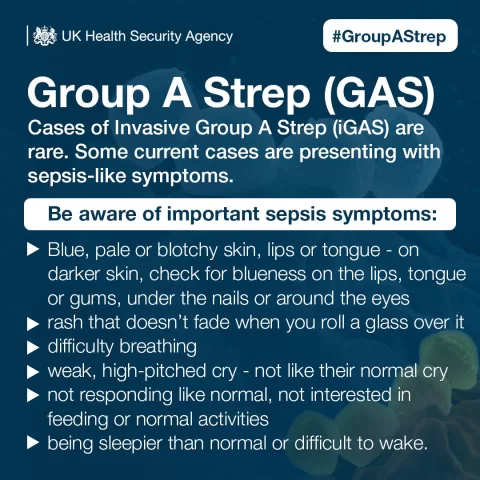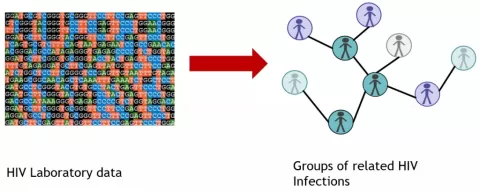Imported malaria in infants is a rising concern, particularly in regions like Europe where malaria transmission has been largely controlled. This condition arises when infants contract the disease through maternal blood during pregnancy or labor, predominantly caused by the Plasmodium falciparum parasite. Recent studies highlight a concerning trend: asymptomatic malaria, which can silently harbor low parasite densities, has been documented in pregnant women emigrating from endemic areas. The prevalence of imported malaria in Europe, although relatively low, poses a significant public health risk as these cases can lead to dangerous congenital malaria in newborns. Understanding the implications of this transmission is imperative for health systems aiming to protect vulnerable populations, including infants, from the potentially severe impacts of malaria.
Congenital malaria, a term used to describe the transmission of malaria from mother to child during pregnancy or childbirth, has become a focal point in health discussions. Infants can become infected with malaria, primarily the Plasmodium falciparum strain, when their mothers are asymptomatic carriers. This silent malaria transmission not only complicates diagnosis but also poses a risk for underreported cases in areas where malaria prevalence is already low. The challenge lies in identifying these asymptomatic malaria cases and understanding their impact on newborn health. As Europe sees shifts in migration patterns, the recognition of imported malaria cases strengthens the need for proactive measures to protect infants from this preventable disease.
Understanding Imported Malaria in Infants
Imported malaria in infants represents a concerning public health issue, as evidenced by recent cases such as that of a 3-month-old baby in Portugal diagnosed with Plasmodium falciparum. This condition is primarily linked to maternal infections acquired in endemic regions, which pose a risk of transmission during labor. The range of malaria transmission can significantly vary, with rates of asymptomatic malaria complicating our ability to identify and treat cases effectively. In regions like Europe, where malaria is less prevalent, understanding the pathways of imported infections is crucial for safeguarding public health, especially among vulnerable populations such as infants.
Congenital malaria, while rare, can occur when the malaria parasite crosses the placental barrier, often undetected during routine prenatal care. In the described case, a mother who remained asymptomatic throughout her pregnancy still posed a risk to her newborn. The asymptomatic nature of many malaria infections, particularly in women who have traveled from regions with high malaria prevalence, underscores the importance of molecular diagnostic tools to detect even low-density cases. Failure to acknowledge these risks can lead to ongoing malaria transmission and outbreaks in non-endemic areas.
The Role of Congenital Transmission in Malaria Cases
Congenital malaria transmission is a significant aspect of understanding the broader implications of malaria propagation in infants, particularly in non-endemic regions. As highlighted in the recent case study from Portugal, congenital malaria usually occurs when a mother is infected with Plasmodium falciparum, and the parasites cross the placenta. This highlights the importance of thorough maternal screening for malaria, especially among women who have recently immigrated from areas known for high malaria prevalence. Effective intervention and screening can mitigate the risks associated with congenital malaria and help reduce morbidity in newborns.
The rarity of congenital malaria is attributed to the protective barrier of the placenta; however, it remains a concern when maternal infections are overlooked. In the discussed case, effective screening allowed for early identification and subsequent management of the infant’s condition, which is critical in preventing severe complications. Some studies underline that precise molecular diagnostic methods are vital for detecting sleeping infections that could otherwise go undetected in a pregnant woman’s bloodstream, thereby conserving the health of both mothers and infants.
Frequently Asked Questions
What is imported malaria in infants and how does it occur?
Imported malaria in infants refers to malaria cases diagnosed in babies who have been exposed to malaria parasites from non-local sources, often through maternal transmission during pregnancy or childbirth. Congenital malaria can occur when the parasites, particularly Plasmodium falciparum, cross the placenta or are transmitted during labor, even if the mother remains asymptomatic.
What are the risks associated with congenital malaria in infants?
Congenital malaria in infants is rare but can pose significant health risks, including severe anemia, splenomegaly, and potential neurological complications. Despite the placenta acting as a barrier, cases can arise due to malaria transmission during labor. Early detection and treatment are crucial to mitigate these risks.
How is congenital malaria diagnosed in infants?
Congenital malaria is diagnosed in infants through molecular diagnostic tools that can detect low-density infections that might not be visible in standard blood smears. In the case of a 3-month-old in Portugal, diagnosis was confirmed using optical microscopy and molecular techniques, even though the mother displayed no symptoms.
What is the prevalence of malaria, including imported cases, in Europe?
Imported malaria cases, particularly those caused by Plasmodium falciparum, are reported in Europe, with approximately 8,000 cases annually. Most cases arise from individuals returning from regions with high malaria prevalence, such as sub-Saharan Africa, highlighting the importance of monitoring and prevention strategies for vulnerable groups, including infants and pregnant women.
Can asymptomatic malaria in mothers affect newborns?
Yes, asymptomatic malaria in mothers can significantly affect newborns, as the presence of malaria parasites can still be transmitted to infants, leading to congenital malaria. As observed in the Portugal case, the mother had an earlier P. falciparum infection without showing any symptoms, yet the infant was diagnosed with malaria, demonstrating the hidden risks associated with asymptomatic cases.
What are the challenges in detecting imported malaria in infants?
Detecting imported malaria in infants can be challenging due to the low parasite densities that often accompany asymptomatic infections. Standard diagnostic methods may overlook these cases, necessitating the use of more sensitive molecular diagnostic tools to ensure timely and accurate detection, which is vital for effective treatment.
Why is timely recognition of congenital malaria crucial in infants?
Timely recognition of congenital malaria in infants is crucial to prevent delays in treatment that could lead to severe health complications. Without early detection and intervention, infants are at risk of experiencing significant morbidity, emphasizing the need for heightened awareness and screening practices among healthcare providers.
| Key Points |
|---|
| A 3-month-old infant diagnosed with Plasmodium falciparum infection in Portugal. |
| The mother had malaria in Angola 13 months prior to the infant’s birth and remained asymptomatic. |
| Diagnosis confirmed through molecular techniques, highlighting the transmission risk of imported malaria. |
| Congenital malaria is rare due to the placenta’s barrier but can occur during labor. |
| Imported malaria cases can have low parasite densities and often present asymptomatically. |
| Timely recognition and detection of congenital malaria are crucial to prevent treatment delays. |
| About 8,000 cases of imported malaria occur annually in Europe, primarily from P. falciparum. |
Summary
Imported Malaria in Infants has significant implications for public health, particularly in Europe where the risk of concealed infections can lead to severe outcomes. This case illustrates that low-density asymptomatic malaria can be a potential reservoir for congenital transmission, emphasizing the importance of vigilant screening and timely intervention for infants born to mothers with a history of malaria exposure. Understanding and addressing the risks associated with imported malaria are essential for safeguarding vulnerable populations, such as infants and pregnant women.
The content provided on this blog (e.g., symptom descriptions, health tips, or general advice) is for informational purposes only and is not a substitute for professional medical advice, diagnosis, or treatment. Always seek the guidance of your physician or other qualified healthcare provider with any questions you may have regarding a medical condition. Never disregard professional medical advice or delay seeking it because of something you have read on this website. If you believe you may have a medical emergency, call your doctor or emergency services immediately. Reliance on any information provided by this blog is solely at your own risk.








